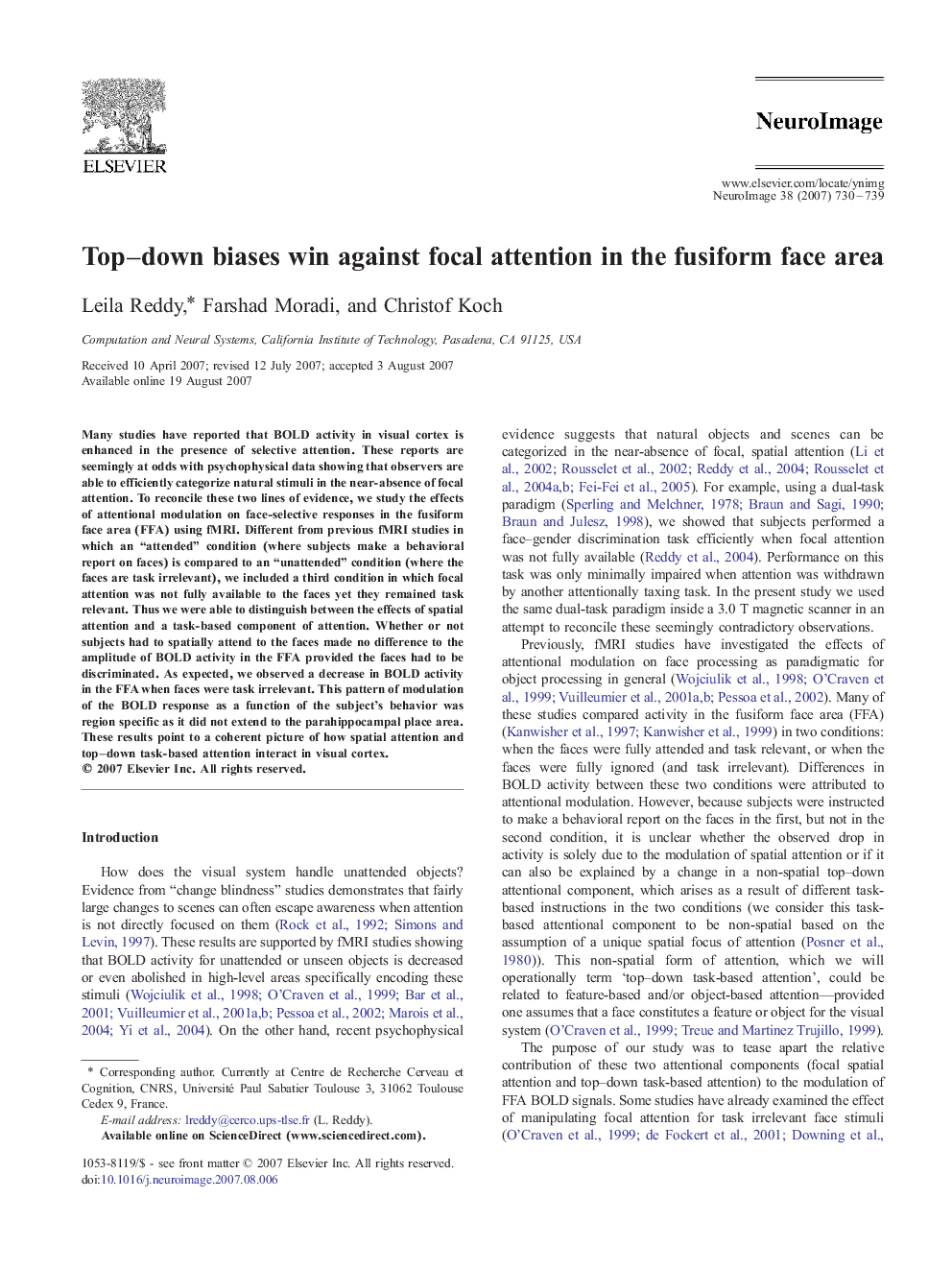| Article ID | Journal | Published Year | Pages | File Type |
|---|---|---|---|---|
| 6040210 | NeuroImage | 2007 | 10 Pages |
Abstract
Many studies have reported that BOLD activity in visual cortex is enhanced in the presence of selective attention. These reports are seemingly at odds with psychophysical data showing that observers are able to efficiently categorize natural stimuli in the near-absence of focal attention. To reconcile these two lines of evidence, we study the effects of attentional modulation on face-selective responses in the fusiform face area (FFA) using fMRI. Different from previous fMRI studies in which an “attended” condition (where subjects make a behavioral report on faces) is compared to an “unattended” condition (where the faces are task irrelevant), we included a third condition in which focal attention was not fully available to the faces yet they remained task relevant. Thus we were able to distinguish between the effects of spatial attention and a task-based component of attention. Whether or not subjects had to spatially attend to the faces made no difference to the amplitude of BOLD activity in the FFA provided the faces had to be discriminated. As expected, we observed a decrease in BOLD activity in the FFA when faces were task irrelevant. This pattern of modulation of the BOLD response as a function of the subject's behavior was region specific as it did not extend to the parahippocampal place area. These results point to a coherent picture of how spatial attention and top-down task-based attention interact in visual cortex.
Related Topics
Life Sciences
Neuroscience
Cognitive Neuroscience
Authors
Leila Reddy, Farshad Moradi, Christof Koch,
